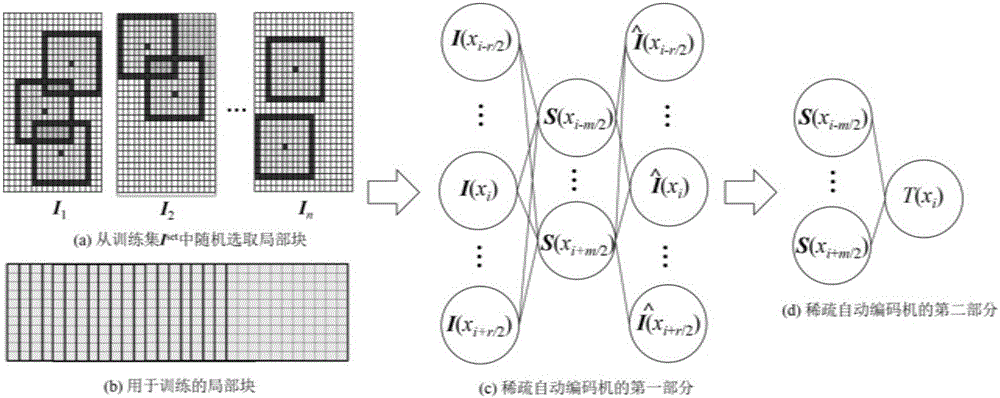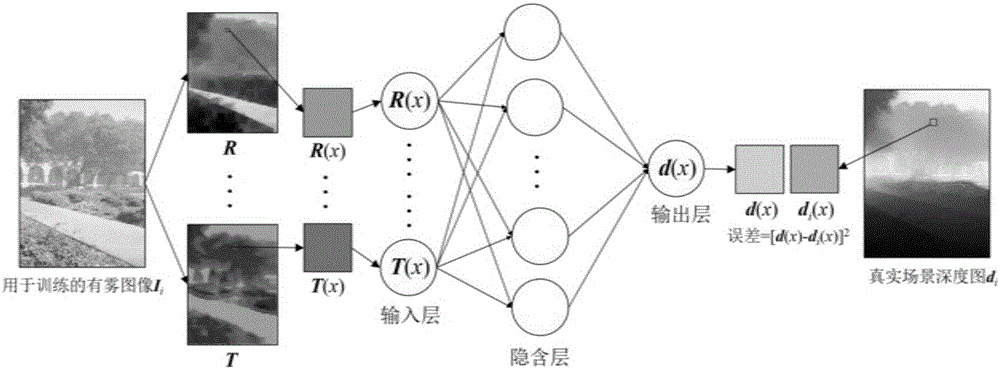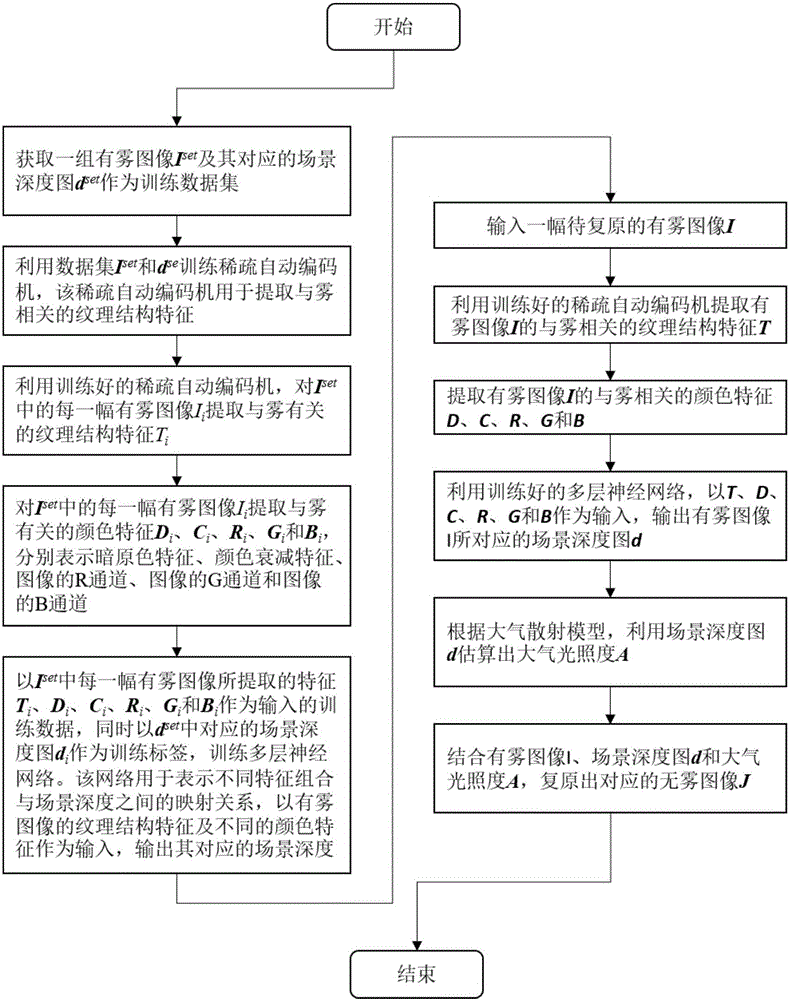Characteristic learning-based single image defogging method
A feature learning, single image technology, applied in the field of computer vision, can solve the problem of transmittance estimation accuracy limitation, not considering texture structure features, etc.
- Summary
- Abstract
- Description
- Claims
- Application Information
AI Technical Summary
Problems solved by technology
Method used
Image
Examples
Embodiment Construction
[0049] The present invention will be further described below in conjunction with the accompanying drawings, but the embodiments of the present invention are not limited thereto.
[0050] The schematic diagram of the execution steps of the method of the present invention is as attached image 3 As shown, it specifically includes the following steps:
[0051] S1. Acquire a set of foggy images I set and its corresponding scene depth map d set as a training dataset;
[0052] S2. Using Dataset I set and d set Training a sparse autoencoder for extracting fog-related texture-structural features. figure 1 A sparse autoencoder and its training process for extracting scene texture and structure features are given. The autoencoder consists of two parts: the first part is sparse coding, which is used to extract the main texture and structural features of local blocks, and is realized by an unsupervised self-learning neural network, such as figure 1 As shown in (c), the input of the...
PUM
 Login to View More
Login to View More Abstract
Description
Claims
Application Information
 Login to View More
Login to View More - R&D
- Intellectual Property
- Life Sciences
- Materials
- Tech Scout
- Unparalleled Data Quality
- Higher Quality Content
- 60% Fewer Hallucinations
Browse by: Latest US Patents, China's latest patents, Technical Efficacy Thesaurus, Application Domain, Technology Topic, Popular Technical Reports.
© 2025 PatSnap. All rights reserved.Legal|Privacy policy|Modern Slavery Act Transparency Statement|Sitemap|About US| Contact US: help@patsnap.com



